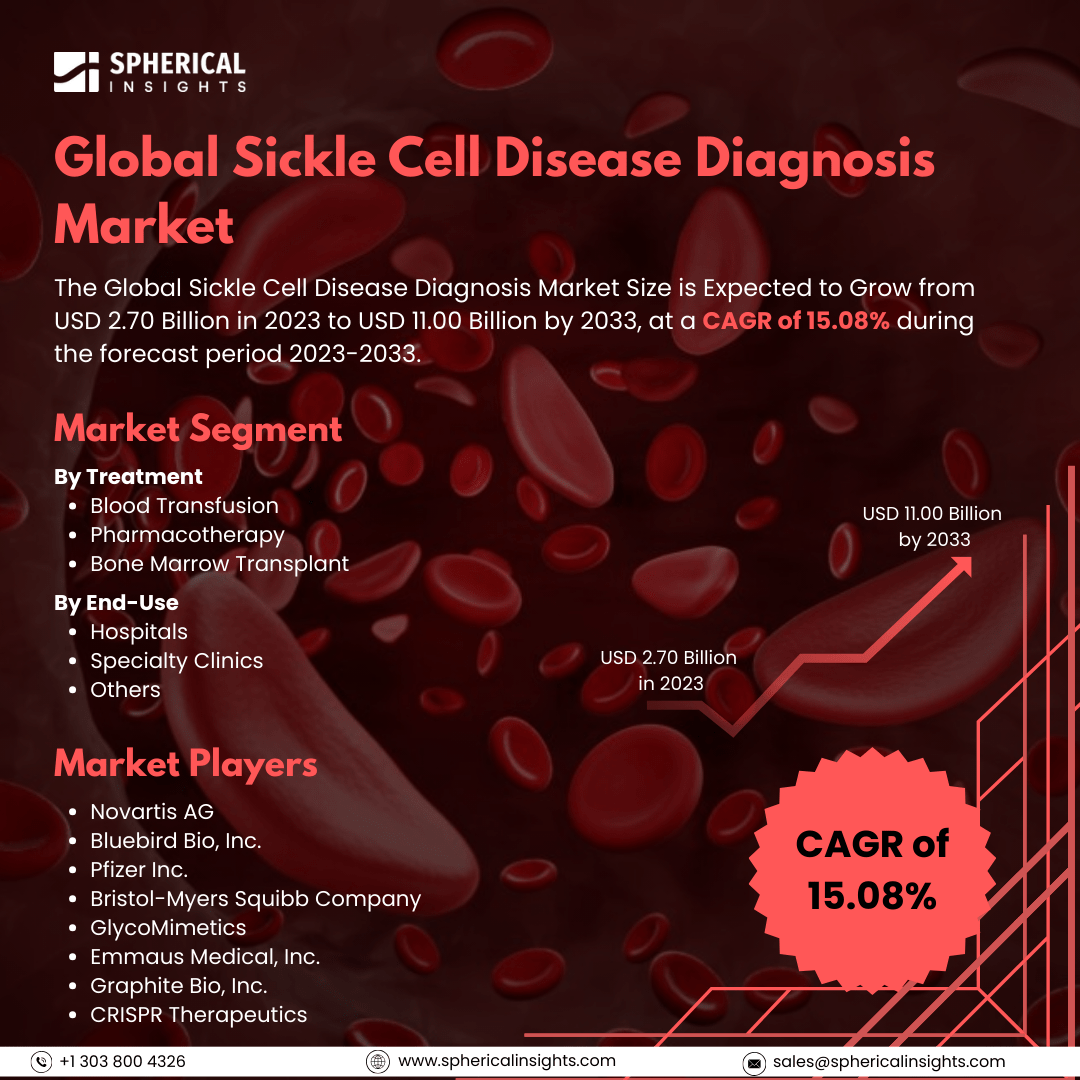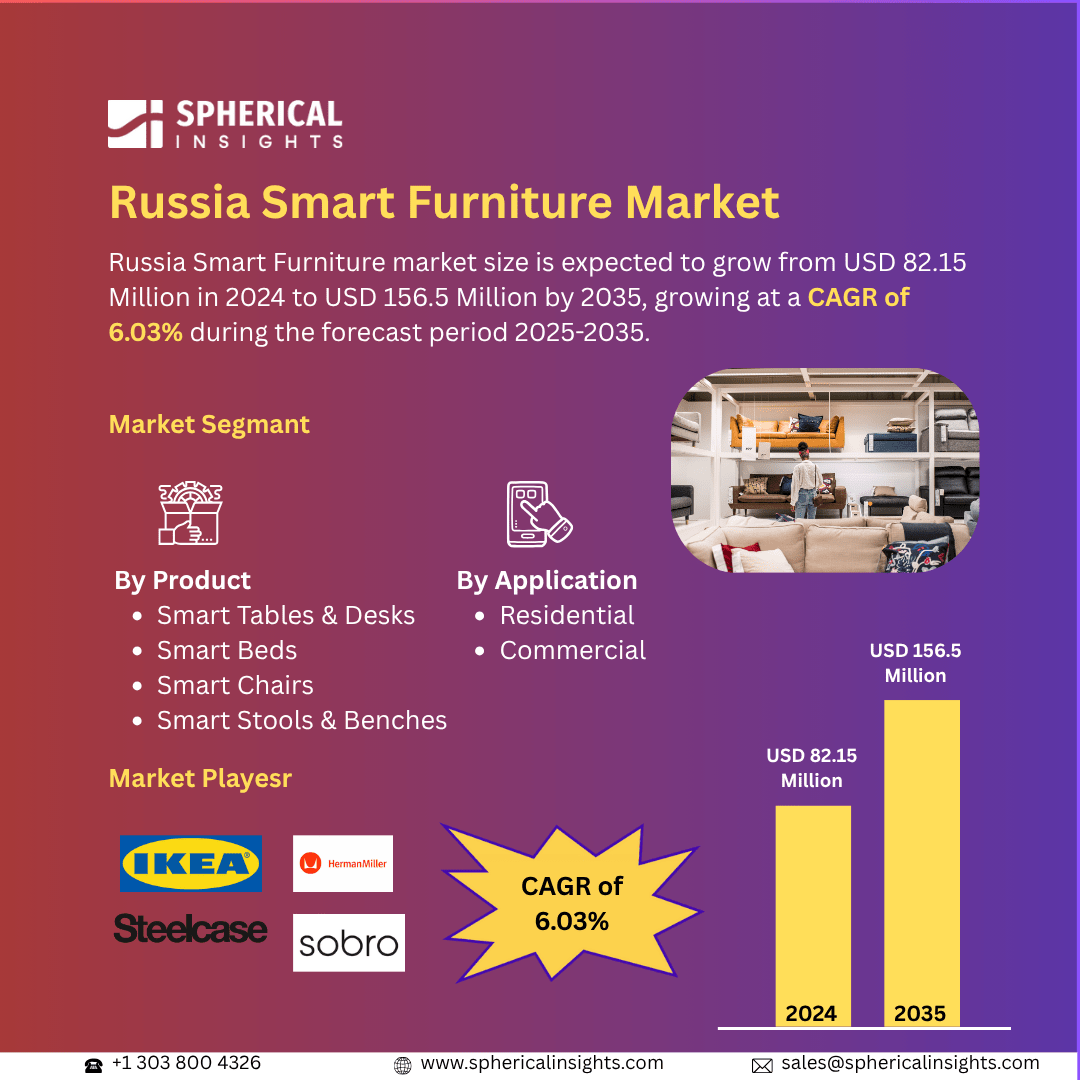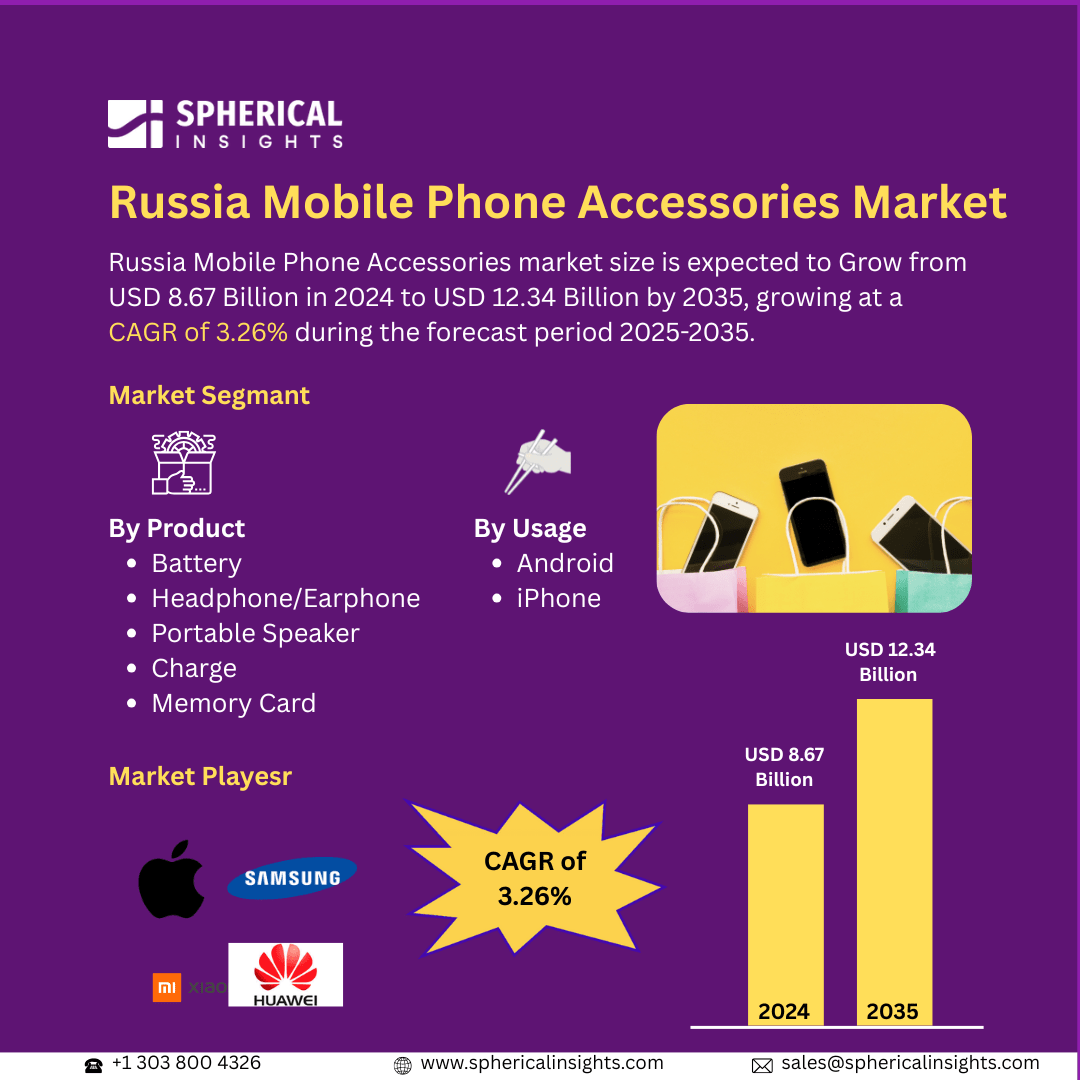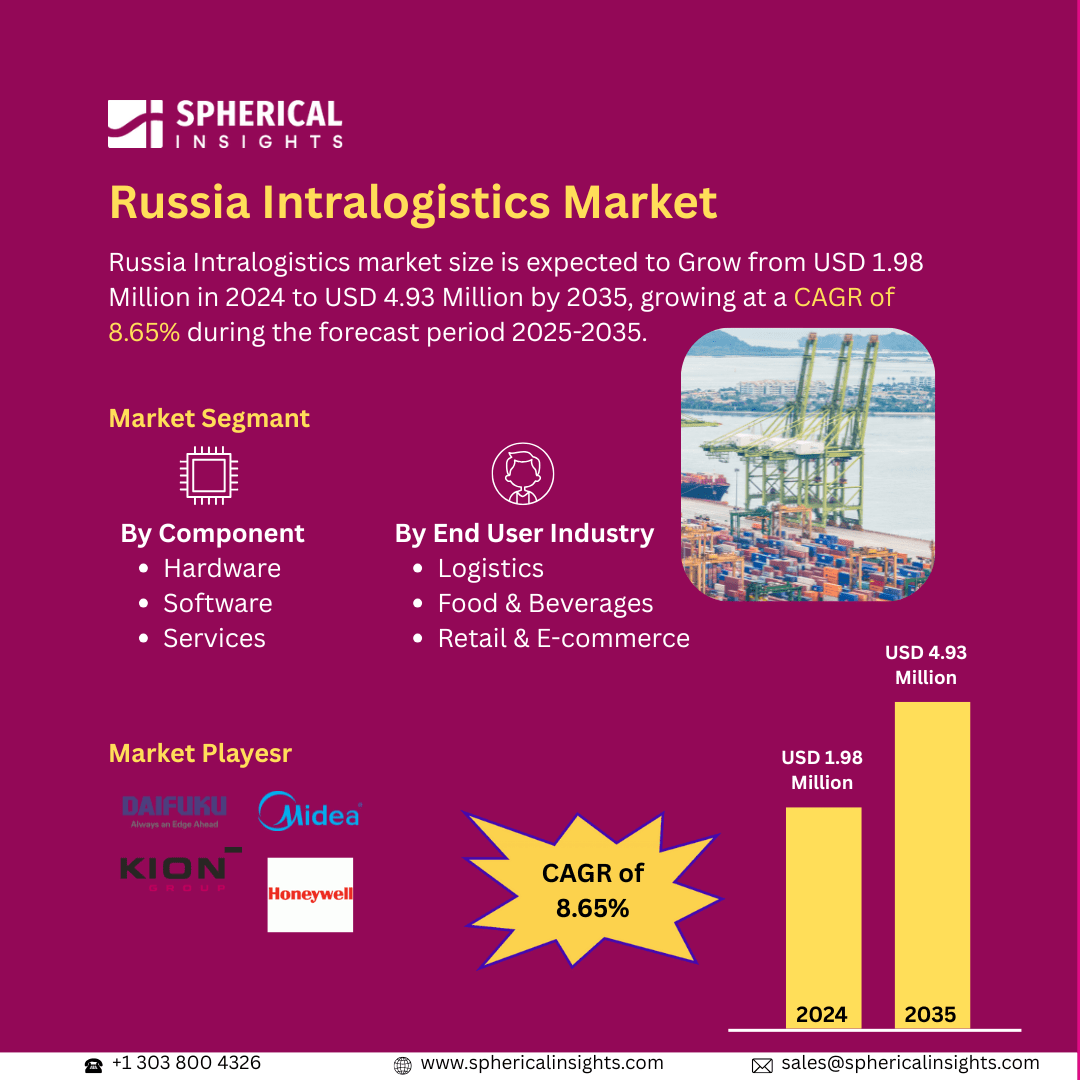Global Sickle Cell Disease Diagnosis Market Size to Exceed USD 11.00 Billion by 2033
According to a research report published by Spherical Insights & Consulting, The Global Sickle Cell Disease Diagnosis Market Size is Expected to Grow from USD 2.70 Billion in 2023 to USD 11.00 Billion by 2033, at a CAGR of 15.08% during the forecast period 2023-2033.
Browse 210 market data Tables and 45 Figures spread through 190 Pages and in-depth TOC on the Global Sickle Cell Disease Diagnosis Market Size, Share, and COVID-19 Impact Analysis, By Treatment (Blood Transfusion, Pharmacotherapy, and Bone Marrow Transplant), By End-Use (Hospitals, Specialty Clinics, and Others), and By Region (North America, Europe, Asia-Pacific, Latin America, Middle East, and Africa), Analysis and Forecast 2023 – 2033.
The sickle cell disease diagnosis market is a global market for the creation, manufacture, and sale of diagnostic products and technology for the identification of sickle cell disease (SCD). It encompasses different forms of diagnosis such as blood tests, hemoglobin electrophoresis, genetic testing, high-performance liquid chromatography (HPLC), and newborn screening programs. It is propelled by drivers like the increasing incidence of SCD, advancement in diagnostic devices, rising awareness, and initiatives by the government for early identification and treatment. Furthermore, the sickle cell disease diagnosis market worldwide is fueled by growing disease incidence, expanding newborn screening programs, and enhanced awareness regarding early diagnosis. Technological advancements in diagnostic equipment, government support, better healthcare infrastructure, and increasing access to genetic testing further enhance market growth. Growing research investments and collaboration among healthcare organizations also contribute to market growth. However, the high diagnostic costs, limited awareness, lack of advanced testing facilities in developing regions, delayed diagnosis, and inadequate reimbursement policies for genetic testing are key restraints for the growth of the market.
The blood transfusion segment accounted for the largest share in 2023 and is anticipated to grow at a significant CAGR during the forecast period.
On the basis of the treatment, the global sickle cell disease diagnosis market is divided into blood transfusion, pharmacotherapy, and bone marrow transplant. Among these, the blood transfusion segment accounted for the largest share in 2023 and is anticipated to grow at a significant CAGR during the forecast period. The segmental growth is attributed to its critical role in managing sickle cell disease by reducing complications such as anemia and organ damage. The increasing prevalence of the disease, rising demand for effective treatment options, advancements in transfusion techniques, and improved healthcare access are driving its significant CAGR growth during the forecast period.
The hospitals segment accounted for the greatest share in 2023 and is anticipated to grow at a substantial CAGR over the forecast period.
On the basis of the end-use, the global sickle cell disease diagnosis market is divided into hospitals, specialty clinics, and others. Among these, the hospitals segment accounted for the greatest share in 2023 and is anticipated to grow at a substantial CAGR over the forecast period. The segmental growth is attributed to the availability of advanced diagnostic facilities, comprehensive patient care, and access to specialized treatments for sickle cell disease. Increasing hospital admissions, improved healthcare infrastructure, rising awareness, and government initiatives supporting early diagnosis and treatment are driving its substantial CAGR growth over the forecast period.
North America is projected to hold the largest share of the global sickle cell disease diagnosis market over the forecast period.
North America is projected to hold the largest share of the global sickle cell disease diagnosis market over the forecast period. The regional growth is attributed to a high prevalence of the disease, advanced healthcare infrastructure, and strong government support for newborn screening programs. Additionally, increasing awareness, availability of advanced diagnostic technologies, growing research funding, and the presence of key market players further drive market growth in the region.
Asia Pacific is expected to grow at the fastest CAGR growth of the global sickle cell disease diagnosis market during the forecast period. The regional growth is attributed to the increasing awareness, rising prevalence of sickle cell disease in certain populations, and improving healthcare infrastructure. Government initiatives for early diagnosis, expanding access to advanced diagnostic technologies, growing research investments, and collaborations with global healthcare organizations further drive market growth in the region.
Company Profiling
Major vendors in the global sickle cell disease diagnosis market are Novartis AG, Bluebird Bio, Inc., Pfizer Inc., Bristol-Myers Squibb Company, GlycoMimetics, Emmaus Medical, Inc., Graphite Bio, Inc., CRISPR Therapeutics, and others.
Key Target Audience
- Market Players
- Investors
- End-users
- Government Authorities
- Consulting and Research Firm
- Venture capitalists
- Value-Added Resellers (VARs)
Recent Development
- In April 2023, the U.S. FDA designated Editas Medicine, Inc.'s EDIT-301 as an Orphan Drug Designation for the treatment of sickle cell disease.
Market Segment
This study forecasts revenue at global, regional, and country levels from 2023 to 2033. Spherical Insights has segmented the global sickle cell disease diagnosis market based on the below-mentioned segments:
Global Sickle Cell Disease Diagnosis Market, By Treatment
- Blood Transfusion
- Pharmacotherapy
- Bone Marrow Transplant
Global Sickle Cell Disease Diagnosis Market, By End-Use
- Hospitals
- Specialty Clinics
- Others
Global Sickle Cell Disease Diagnosis Market, By Regional
- North America
- Europe
- Germany
- UK
- France
- Italy
- Spain
- Russia
- Rest of Europe
- Asia Pacific
- China
- Japan
- India
- South Korea
- Australia
- Rest of Asia Pacific
- South America
- Brazil
- Argentina
- Rest of South America
- Middle East & Africa
- UAE
- Saudi Arabia
- Qatar
- South Africa
- Rest of the Middle East & Africa



